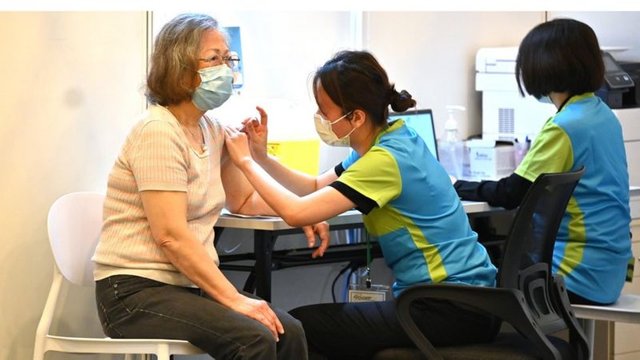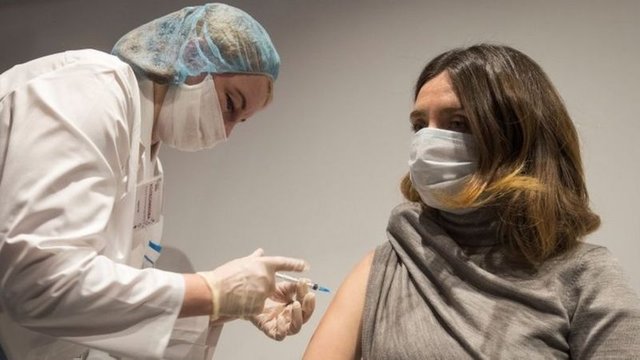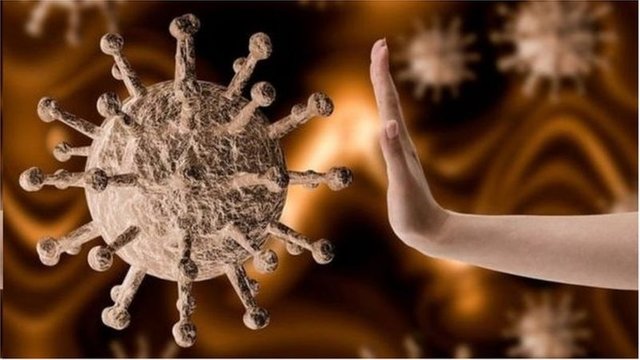New crown vaccine: Four major challenges facing humans in achieving global herd immunity

Israel is one of the few countries in the world that has achieved herd immunity. The vaccination rate is about 57%, which is close to achieving the minimum requirements for herd immunity. Israel will take the lead in lifting restrictions next month. Its experience has proved to the world that herd immunity can be achieved as soon as possible and normal life can be resumed as soon as possible.
But in sharp contrast, in the African countries of Comeroon and Zambia, only 0.1% of the population received two doses of the new crown vaccine. According to an article in the international authoritative academic journal "Nature", currently, less than 1% of the population in low-income countries are vaccinated against the new crown.
When the global vaccination rate has formed a huge gap, the distribution of vaccines is uneven, the suspicion of vaccines, whether minors should be vaccinated, whether the vaccine can prevent the spread of the virus, and other factors are hindering the global realization of herd immunity.
"Hidden immunity", also known as "crowd immunity", is an indirect protection against infectious diseases. This protection will be formed when the population gains immunity through vaccination or previously suffering from the disease. At present, the academic community generally believes that at least 60% of the population of a country or region should produce antibodies in order to form "herd immunity".
Hong Kong opens up new crown vaccination residents' willingness increases significantly with age
Herd immunity is controversial, but the world may be helpless to accept the Swedish model
Chen Zhengming, professor of epidemiology at Oxford University, talks about herd immunity and the development of new crown vaccines
Three months after the Hong Kong Special Administrative Region government launched the new crown vaccination, it announced that it would open a vaccination program to residents stranded in mainland China and foreign asylum seekers "based on public health considerations."
Hong Kong, a city that is hesitant to vaccines, will have 840,000 doses of Fubital vaccine expired by August this year. There are vaccine shortages in many parts of the world, with Hong Kong being an exception.
The Hong Kong government has ordered 15 million doses of Coxing and Fubitai vaccines for citizens to vaccinate. In this city with a population of about 7.5 million, the Hong Kong government has ordered enough to give all Hong Kong citizens two full doses.
However, since the Hong Kong government launched the vaccination program at the end of February, as of May 31, the population who had completed the two injections accounted for 15.3% of the total population.
Hong Kong’s hesitant attitude towards vaccines is believed to be not only due to mixed political factors-Hong Kong people have natural xenophobia and resistance to Chinese products, but also the public’s own distrust of vaccines. Moreover, the recent epidemic in Hong Kong is under control, and the public has no urgent need for vaccines.
An article in the "Hong Kong Medical Journal" entitled "Hong Kong People's Hesitation on Vaccines and New Coronary Vaccination Situation" pointed out that during the period from the first wave of the epidemic to the third wave (between February and July 2020) ), the acceptance of vaccines among the workers in Hong Kong surveyed dropped from 44.2% to 34.8%.
A survey published by the City University of Hong Kong at the end of February this year found that the overall acceptance of the new crown vaccine by Hong Kong citizens was only 38%; the acceptance of young people (20 to 24 years old) was less than 30%.
Therefore, the current progress of vaccination in Hong Kong confirms the early vaccination willingness survey to a certain extent.
According to early estimates, Hong Kong’s vaccination rate may eventually stay around 40%, which is far from the theoretical minimum standard of 60% required for herd immunity.
Recently, a local Hong Kong developer announced to provide incentives to donate brand new residential units worth tens of millions of Hong Kong dollars in the form of a lottery to Hong Kong permanent residents who have received two doses of the new crown vaccine. The news announced that on the second day, the vaccine reservation rate in Hong Kong increased by about 10%.
Unlike Hong Kong, Europe and the United States are partly hesitant about vaccines due to the impact of an "anti-vaccine campaign" that has lasted for more than 10 years. They are worried about the side effects of the vaccine itself; secondly, European and American regulatory agencies have confirmed that AstraZeneca vaccines , Pfizer and Modona vaccines have thrombosis problems, and young women are more likely to have thrombosis problems, so people think twice before vaccination.
As of May 31, according to the data of Johns Hopkins University in the United States, the proportion of the United States who received two doses of the new crown vaccine was 41.16%; the vaccination rate in Germany was 17.8%, Spain was 18.7%, and the United Kingdom as of May 28 The data shows 47.3%.
Age limit for vaccination
Most current scientific studies have shown that children are less likely to be infected by the new coronavirus than the elderly. Therefore, when designing vaccines, vaccine developers give priority to designing vaccines for the elderly.
A study of seven countries published in the authoritative medical journal "The Lancet" estimated that during the pandemic, less than 2 children out of every 1 million children died of the new crown.
Due to the lack of clinical trials, all current COVID-19 vaccination has an age limit. For example, in Hong Kong, only people over 16 years old can receive Fosun/BioTech. This restriction makes it even more difficult to achieve the goal of herd immunity in the general population.
Take the United States as an example. In the United States, people under the age of 18 account for 24% of the total population (according to the 2010 census data). If most people under the age of 18 are not vaccinated, then people over the age of 18 must be vaccinated 100% to achieve the 76% immunity required for herd immunity.
But the reality is that not 100% of adults are willing to be vaccinated, so policy makers hope to expand the vaccinated population to children. At present, 40% of the population in the United States who have completed two doses of complete vaccination. If you want to reach the 60% pass line required for herd immunity, you must try to vaccinate most of the children under the age of 18 in the United States, or in other words, almost all Children are vaccinated.
The United States has urgently authorized the use of Pfizer vaccines in children aged 12-16. And the United States began to test the safety and effectiveness of the new crown vaccine when used in children under 12 years of age.
This means that future vaccination will extend to younger children.
However, whether the current vaccine is safe and effective for use in children under 12 years of age still requires clinical trials by vaccine developers to prove it. In reality, it is impossible for all children to be vaccinated against the new crown.
But in the context of severe global supply shortages, one more child from a rich country will be vaccinated, which means one less adult from a poor country will be vaccinated. At present, the benefits of vaccination for adults are obviously greater than for children, because it may save lives.
Uneven vaccine distribution and vaccination

Many countries have begun to inject the new crown vaccine on a large scale.
In the past year or so, Taiwan, which has served as a "prevention model student", has continued to break hundreds of new cases in the last two consecutive weeks. The local vaccine has not yet been successfully developed. Now only AstraZeneca vaccine is available for citizens to vaccinate. The vaccination rate is about 1.3%, and there are about 300,000. People are vaccinated. The Taiwanese government estimates that 10 million doses of vaccine will be available for delivery by the end of August, and hopes that 60% of the population will receive the vaccine in October. But the reality is that in Taiwan, which is struck by politics and the epidemic, it is not easy to purchase vaccines in the already tight global market if it does not accept vaccines from China.
In India, which was hit by the epidemic, as of the end of May, the coverage rate of the new crown vaccine was only 3%. At the current rate, it may take up to four years for the entire 1.3 billion population of India to be vaccinated.
Due to the shortage of vaccines, some local governments in India have announced that they have to suspend vaccination for people aged 18-44.
India, as the world's largest vaccine manufacturer, produced an average of about 60-70 million AstraZeneca vaccines per month before the epidemic. In order to meet India's domestic demand, it has been decided not to export vaccines before the end of this year.
This will affect the world's vaccine supply. The new crown vaccine has always been in short supply, and uneven supply means uneven distribution and uneven vaccination.
Covid-19: WHO warns developed countries that hoarding vaccines will cause "catastrophic moral failure"
After countries such as Europe and the United States have been condemned by international public opinion for hoarding vaccines, the United States announced in mid-May that it would supply 80 million doses of vaccine to foreign countries within six weeks. This is still a drop-in effort to solve the current global uneven distribution and insufficient supply of vaccines.
Even if the vaccination rate in a certain country is high, and the overall vaccination rate in neighboring countries and the international community is not high, "foreign import prevention" is still a problem for epidemic prevention and will affect the progress of herd immunization. In the United States, the vaccination rate varies from state to state. According to data from Johns Hopkins University in the United States, as of May 25, the new crown vaccination rate in Connecticut (Connecticut) reached 47.29%, while that in Mississippi was only 24.79%.
Regional imbalances in vaccination can also lead to small-scale outbreaks. This has also become a factor that affects herd immunity.
Effectiveness of the new crown vaccine

Modona and Pfizer vaccines are very effective in preventing symptomatic diseases. The Phase III trial of Pfizer's new crown vaccine showed 95% effectiveness, and the effectiveness of Modona's Phase III clinical trial was 94.5%.
The interim analysis results of the third phase of clinical trials of two new crown vaccines under China National Pharmaceutical Group published on May 26 showed that the two vaccines can provide more than 70% of the effectiveness of preventing symptomatic infection. According to the report, both vaccines "significantly reduce the risk of new coronary symptoms."
Sinopharm's new crown vaccine has more than 70% protection in the third phase trial, and the variant virus has not been tested
However, an article published on the "Nature" website stated that it is still unclear whether the existing new crown vaccine can protect people from infection or spread the virus to others. This uncertainty casts a shadow over human efforts to achieve herd immunity.
"Only when the new crown vaccine can block the spread of the virus does herd immunity make sense." Nature quoted Shweta Bansal, a mathematical biologist at Georgetown University in Washington, D.C. "If (the new crown vaccine) does not have (this function), then the only way to gain herd immunity is to vaccinate everyone. The effectiveness of the vaccine to prevent the spread of the virus needs to be'quite high' for herd immunity to work. The data is still inconclusive."
However, Samuel Scarpino, a network scientist researching infectious diseases at Northeastern University in Boston, Massachusetts, said that the ability of a vaccine to block the spread of the virus does not need to be 100% to have an effect. Even 70% effectiveness will be "astonishing."